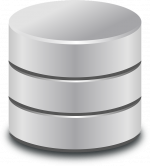
The open-source blockchain technology project Hyperledger has announced a new framework for building supply chain solutions. Hyperledger Grid is an “ecosystem of technologies, frameworks, and libraries that work together, letting application developers make the choice as to which components are most appropriate for their industry or market model,” the project team explained.
While the Linux Foundation-backed Hyperledger project focuses on blockchain technologies, the project members note that Grid is a framework, not a blockchain or application. ““Supply chain is commonly cited as one of the most promising distributed ledger use-cases. Initiatives focused on building supply chain solutions will benefit from shared, reusable tools. Hyperledger Grid seeks to assemble these shared capabilities in order to accelerate the development of ledger-based solutions for all types of cross-industry supply chain scenarios,” the team wrote in a post.
Hyperledger Grid was designed with two goals in mind:
- Provide reference implementations for supply chain data types, models, and smart contract business logic
- Showcase how to combine components from the Hyperledger stack into a single business solution.
According to Hyperledger, most of its platforms are flexible, but do not speak the language of businesses. Grid aims to provide a way to implement business standards and norms, it explained.
In the beginning, Grid will integrate with other elements in the Hyperledger stack via Sabre, which is an engine for WebAssembly (WASM) Smart Contracts. Hyperledger hopes that Sabre and WASM become a “de facto Hyperledger standard.”
Grid’s roadmap currently consist of product, identity, location and certification initiatives. In addition, it will provide reference implementations for asset transformation and refinement, asset exchange and asset tracking as well as sample apps to demonstrate these models.






